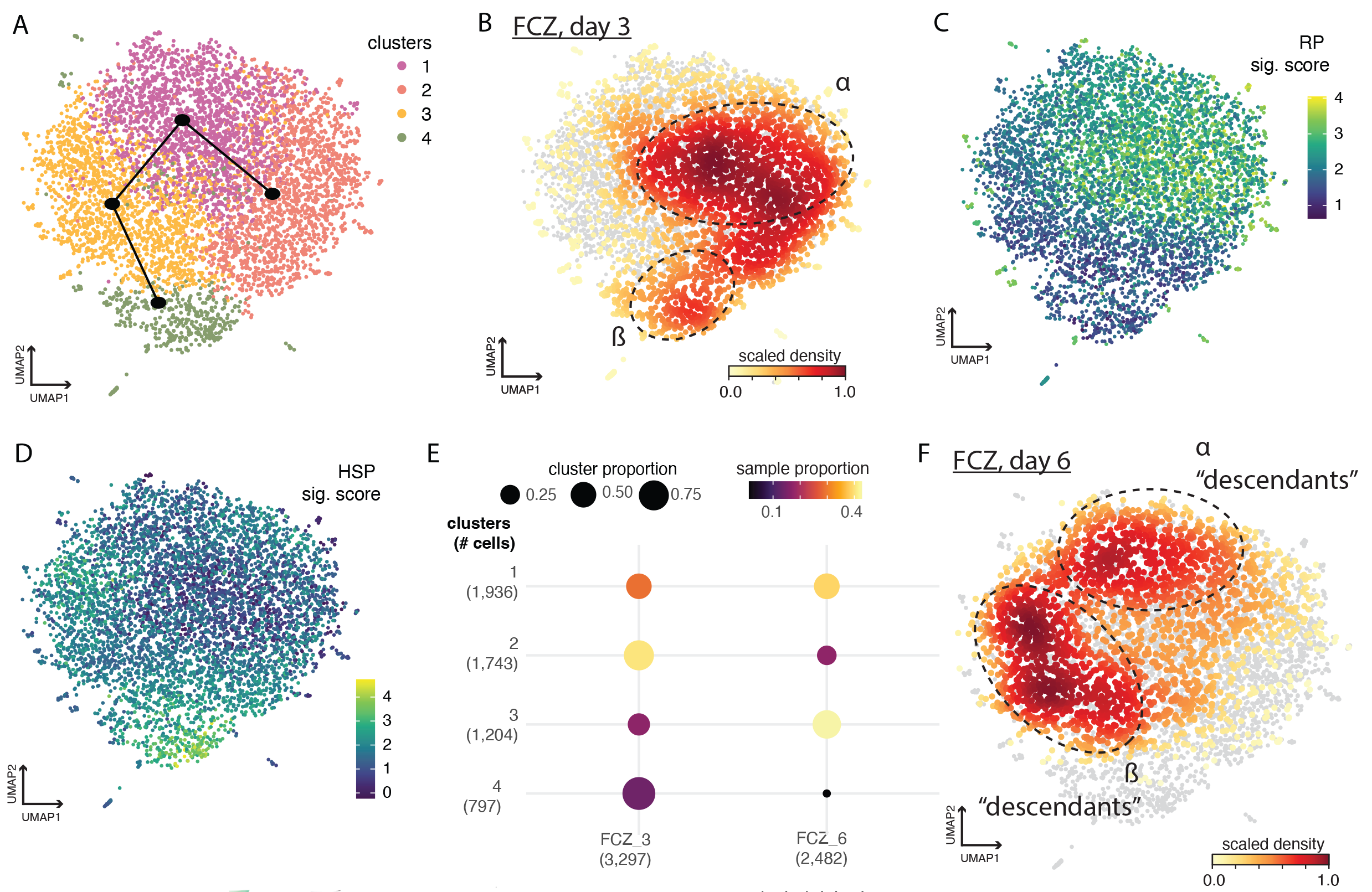Abstract
Candida albicans, an opportunistic human pathogen, poses a significant threat to human health and is associated with significant socio-economic burden. Current antifungal treatments fail, at least in part, because C. albicans can initiate a strong drug tolerance response that allows some cells to grow at drug concentrations above their minimal inhibitory concentration. To better characterize this cytoprotective tolerance program at the molecular single cell level, we used a nano-liter droplet-based transcriptomics platform to profile thousands of individual fungal cells and establish their subpopulation characteristics in the absence and presence of antifungal drugs. Profiles of untreated cells exhibit heterogeneous expression that correlates with cell cycle stage with distinct metabolic and stress responses. At two days post-fluconazole exposure (a time when tolerance is measurable), surviving cells bifurcate into two major subpopulations: one characterized by the upregulation of genes encoding ribosomal proteins, rRNA processing machinery and mitochondrial cellular respiration capacity, termed the Ribo-dominant (Rd) state; and the other enriched for genes encoding stress responses and related processes, termed the Stress-dominant (Sd) state. This bifurcation persists at 3 and 6 days post treatment. We provide evidence that the Ribosome Assembly Stress Response (RASTR) is activated in these subpopulations and may facilitate cell survival.
